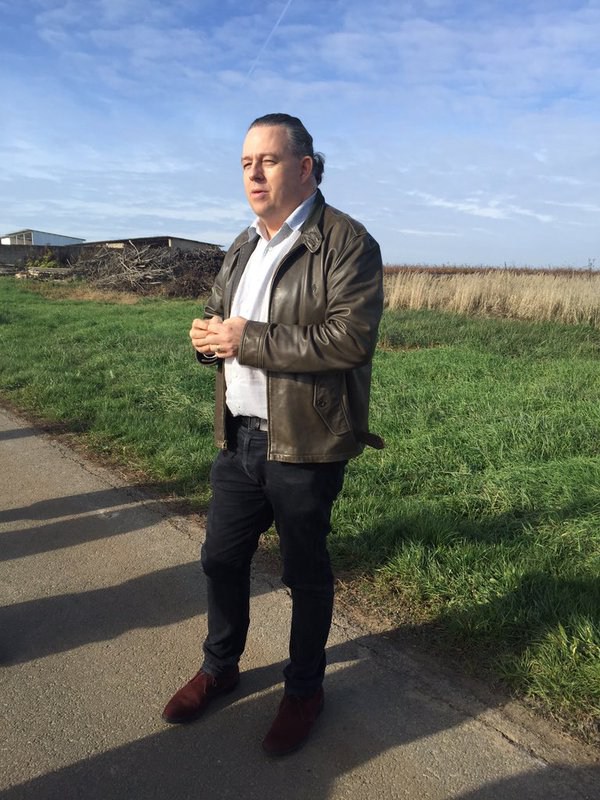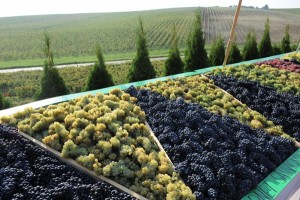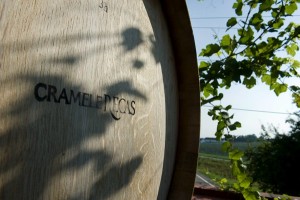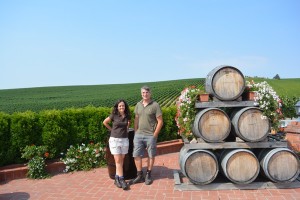Full name: Philip Cox
Role: Director at Recas Winery
DOB: 28.03.1968
Birthplace: Bristol
Twitter Handle: @cox_home
Website: http://www.recaswine.ro/
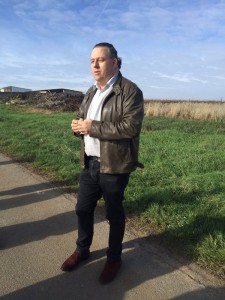
J: Could you tell us a little about how you got to where you are today? Why Romania, why wine? In the early days, you were running a business that imported beer after the collapse of the Soviet Union, right?
P: Immediately after I finished university in Greenwich in 1990 I was working in the advertising sales business in London, because it was the only job I could get. As the youngest member of the team I was given the job of dealing with all the newly democratic countries in the east of Europe that had just overthrown their communist government.
After travelling extensively in Croatia, Serbia, Bulgaria Hungary and Romania – I pretty quickly figured out that these countries didn’t really need advertising as they were all pretty much in a state of complete economic collapse and barely had any industrial production by that stage.
I was particularly fascinated by Romania, which was the most isolated and oppressed of al the eastern European countries, and I was especially impressed about the buoyant optimism that existed at the time, in spite of terrible conditions – real poverty and hunger. The people were optimistic and believed strongly that closer association with the west would solve all their problems. This meant they were (and still are) particularly keen to buy western products and ‘get to’ a west European lifestyle as fast as possible.
After 50 years of state ownership of practically all business, commerce and agriculture – almost everyone I met wanted to be an entrepreneur and many proposed to me to go into partnership – they assumed all foreigners were very wealthy (definitely not my case at the time). In the end I decided that indeed there was a lot of opportunity and it would be much more fun to have a business in Romania than to work in a boring advertising company selling something nobody really wanted!
So with a couple of newfound friends in Romania I started one of the first privately owned import businesses in Romania – initially importing Heineken beer which was a big success, and later Perrier, Douwe Egberts coffee and Bols liqueurs from Netherlands.
There was very little competition from local producers so our products (which were well known) were very successful, despite being very expensive for Romanian people. Starting from 1 pallet of Heineken (which I paid for out of my last wages from London…) we were soon selling several full truck loads per week.
From here we soon got into problems with payments, because at the time there was hyperinflation in Romania of more than 1000% per year. When we started importing it was 100 Romanian lei to 1 dollar which soon 40,000 to 1 – which meant that buying foreign currency to pay for our products was a big problem! To solve this problem I decided the best solution was to try and export something so that we could be paid for in hard currency – the Romanian lei was not exchangeable outside the country at that time.
Wine seemed to be an obvious choice – it was something Romania was quite well known for at the time, and Bulgarian wines were a big hit in the UK when I was growing up. So I thought “why not Romanian wine?”
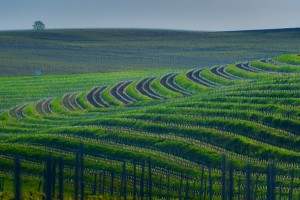
I didn’t know much about wine – but I was determined to learn. I did some of the WSWA courses back in the UK and worked for some months in my cousin Norman’s wine shop in Bristol – The Little Tipple (which is still going).
Pretty soon I was travelling around Romanian wineries trying to get samples from them – which was not easy as they were all still state run by that time (1993) and not very interested in exporting (still true in 2016) due to the undersupply of the Romanian wine market by insufficient local production. I managed to get a few samples and tried going to a few wine fairs in the UK – the Bristol Wine Fair (forerunner of the London Wine Fair). I also got in touch with anyone that I thought might want to buy some Romanian wine.
In the end I had a lucky break meeting Angela Muir MW – who was working at the time for leading German wine producer (Carl) Reh Kendermann and was indeed looking for Eastern European wines. After a long and eventful trip round the (bad) roads of Romania in a 20 year old Opel Ascona – we eventually did find some wine and start selling it to the UK, via Germany where it was bottled.
Pretty soon the wine business was going better than my other business – we managed to get listings in Sainsbury, Thresher and Kwick Save. Reh Kendermann decided to head hunt me from my own company. The promise of a constant salary and being managing director of their Romanian subsidiary at the age of 24 was enough to convince me, so I worked 7 years for Reh Kenderman in Romania and learned an enormous amount about the wine business.
You built this thing from scratch? I read that you bought the site off of the Romanian authorities in 2000 and have managed to raise over 30 million Euros of investment so far? Could you tell us a little about the journey, replanting the vineyards, raising the investment, your trials and tribulations. What you have done over the last 15 years sounds nothing less than heroic…
By the year 2000 I was frustrated at the company I was working for (Reh Kinderman) and their policy of not wanting to invest too much in production – specifically vineyards. I knew that the secret of a successful wine business in Romania was going to be having a good stable source of good quality low cost grapes, and that was very hard (impossible even) to achieve through buying grapes on the open market.
Even around the year 2000 all the vineyards in Romania were still state run, and many were in a poor state – so buying grapes was a hit and miss affair – making it hard to build a stable business. In 2000 the government finally started playing with the idea of privatisation and of giving back the land under the vineyards to the families that owned it before the communist nationalisation of 1948.
This was a long and tortuous process that would take over 10 years and is still causing problems even now – many changes of the legislation on land repatriation and a good dose of corruption mean that even now there are large tracts of land with severe legal problems over exact ownership. Vineyards being a long term investment – nobody wanted to invest in a 30/40 year project on land that they are not sure they owned, so no vineyards were planted at all between 1987 and the early 2000s. This created an undersupply of grapes which resulted in Romania as a net importer of wine.
I was lucky to find one of the first vineyards that was privatised – Recas. I had purchased grapes from here regularly during my time at Reh Kendermann and I knew it had good sized (600 ha) compact vineyards – all close to the winery which is important.
The luck came from the fact that the land under the vineyards had all been owned before communism by German settlers – who quickly left Romania after the Second World War, and who had ceded their land to the Romanian government in exchange for being allowed to go to live in Germany.
So we were able to buy vineyards in good condition, and with no problems around land ownership. A big problem was that I didn’t have much money, and I didn’t have much idea what I wanted to do really, apart from having a medium sized vineyard of about 100 hectares that would sell good quality wines in western Europe.
The authorities at the time decided that they only would sell the whole vineyard in one go, so I decided to go into partnership with my wife, plus Gheoghe Iova and Ioan Georgiu, who were director and head winemaker of the state company at the time. We managed to convince the government to let us pay for the vineyards over 5 years, and one year later did a similar deal for the winery.
This way of setting up the business was both an important factor in the eventual success of the company and a very big stress. We were suddenly the owners of a huge vineyard – with hundreds of workers that needed to be paid, a very run down and outdated winery that needed investment, and millions of litres of wine that we needed to sell. And, from a company that, until that point, had never sold bottled wines, just grapes and bulk wine!
We also didn’t have any money and couldn’t get any bank loans or outside investments because Romania at that time was in complete economic turmoil and still seen as very risky.
The only way forward was to be aggressive and try and sell as much wine as we could as quickly as we could, which led me to the conclusion that the only solution was producing very good wines for reasonable prices, being very flexible with our customers both about wine style and packaging, and working really, really hard to improve the wine and reach more customers.
The 2000s were are very difficult time for us, nobody knew our company (even in Romania and especially outside it) and nobody wanted Romanian wines. We really struggled financially because wine is hugely capital intensive at the best of times, but especially if you get into a big vineyard that needs constant investment and improvement. Many times we didn’t have enough money to pay the workers and had to beg and borrow from friends and family… or sell personal stuff like cars and jewellery just to get through each month.
In the end it turned out to be a winning strategy because we were forced to be very economical and very entrepreneurial with no help from anyone outside the company. We also had to be very aggressive and flexible with our customers and work very hard to build up entirely new brands and product categories from zero.
The expansion of foreign owned large retail chains in Romania gave us a big boost on the local market, as we know what supermarkets need and we expanded greatly our local market sales as this type of shop spread at a dizzying speed across Romania (accounting for 0% of retail sales in 1996 to about 75 % in 2016).
The financial crisis in 2008/9 strangely gave us a real push into export markets because it made customers look for better value wines, and it made buyers look for new sources of supply – who were able to offer good quality wines at reasonable prices and with great flexibility around packaging and product.
You guys have access to lots of lesser known, native varietals. The one that seems to be best known is Feteasca Neagra – could you tell us a little more about some of the others, and what, if anything, you do with them? (Cramposie Selctionata, Negru de Dragasani etc?)
We have several local varieties here in Romania that show promise, although not as many as some other countries like Italy or Portugal who have hundreds… maybe even thousands of varieties.
Many wines in Romania were badly made until very recently so there has not been really enough time to develop a countrywide style for each of these varieties. This is probably a good thing because each winery does what it thinks is best and I think the wines are more interesting as a result.
In our area we have Cadarca which is a central european red variety that has been here for a long time. This is a great wine for crisp fresh roses and as a sparkling rose base wine – with high acidity and strawberry fruit. We make a nice sparkling wine out of it.
Tamioasa Romaneasca is an aromatic local white variety – quite similar to the Muscat family – especially Muscat Frontignon. There is a pink clone of it and a white clone of it, the white one is rather nice and works on its own particularly as a dessert wine, or as an aromatic blending component.
Feteasca Regala is one of the varieties that has been around for about 100 years and is probably the most famous authentic white Romania varietal. It is different and with a delicate aromatic quality of elderflower but if vinified with riper grapes can also be done in a style not far from Viognier. We make about 5 different styles of Feteasca Regala from crisp fresh simple versions, to barrique fermented rich styles for our premium wines.
Negru de Dragasani is a medium bodied, quite aromatic and distinct red variety with a soft velvety tannin – very useful for roses and easy drinking red wines. We just put out a blend of Negru de Dragasani vinified as a white wine – in a 5 variety blend together with Chardonnay, Feteasca Regala, Muscat and Sauvignon Blanc. This is our top of the range white wine – Solo Quinta 2015.
What typifies your wines, and Romanian wines in general? Is there a distinct style?
I think that Romania as a modern wine producer only appeared towards the late 2000’s , and so is less than 10 years old. As such there is not really a national or even regional style. Many producers have very strong individual styles. Our company is definitely oriented towards modern, fruit forward wines – ones that best conserve the natural qualities of the grapes.
We do have Australian and a Spanish head winemakers – Hartley Smithers and Nora Iriate, but I don’t think our wines are copies of Australian or Spanish wines, far from it. We put a lot of investment and effort into preserving the fruit flavour of the grapes through high technology and careful handling. So I’d say our wines are the best possible expression of the local terroir, which is giving balanced fresh and fruity wines that can be drunk young but also age well…
